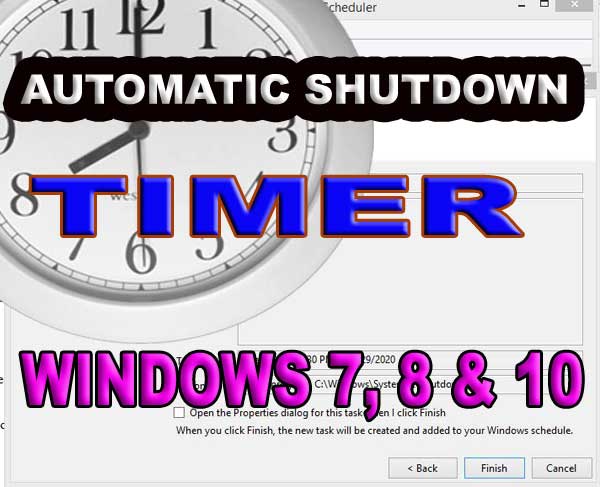

Now you have successfully created a scheduler to shutdown your computer at a specific time. Step 6: Now we are gonna browse to a program ‘shutdown.exe’ in our windows and don’t forget to add ‘-s’ in argument field. Step 5: In Action tab, select ‘Start a program’ option –> click on ‘Next’. Step 4: Now, you can set the exact time, when you want your system to shutdown. Step 3: In next window, select when you want to schedule the task and move further. For instance, we have given it a name: ‘Shutdown timer’ A New window will open, just give a name to this task & click on Next.

Step 2: Now click on ‘Create Basic Task’ link available in the rightmost column. Step 1: Go to start menu and search for ‘Task Scheduler’ and open it. To create shutdown timer, follow the simple steps given below: Read here complete article to know how you can create a new task and schedule to automate your work. We can also use Task Scheduler to set automatic shutdown timer. Windows Task Scheduler allows you to schedule and automates your work.

Method 3: Schedule Automatic Shutdown Using ‘Windows Task Scheduler’
#Windows timer utility to shutdown Pc#
Your PC will now begin the restart process within the next minute. Once in the Command Prompt, type shutdown /r. Related Article: Schedule Email, Set Reminder & Track Email Using Boomerang For Gmail Open the Run window by pressing the Windows Key +R keys, type cmd in the box, and then select the OK button to open the Command Prompt. You will get instantly a message that your scheduled shutdown has been cancelled, as shown above. To cancel the set timer, again open ‘ command prompt‘ and type command: ‘ shutdown -a‘ and press enter. To open command-prompt, Go to Start Menu and search for ‘Command Prompt’ OR directly open run window and type ‘CMD.’ Now type the same command: ‘shutdown -s -t 3600’ and press enter.Ī message will also pop up that Windows will automatic shutdown after the set specific time, as shown above. Similar to the method 1, explained above, we also gonna use the same command in ‘ Command prompt‘.


 0 kommentar(er)
0 kommentar(er)
